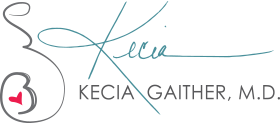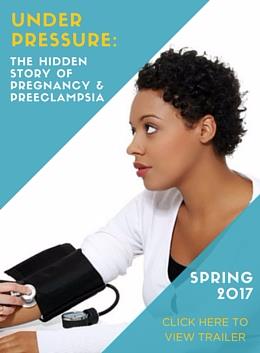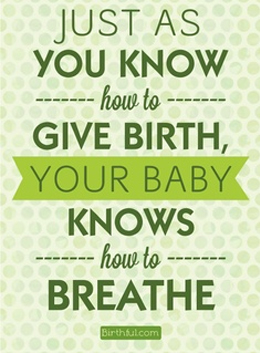Posted on Self.com on March 30, 2016
By: Rachel Jacoby Zoldan
Little hair here, little bump there? Here’s what’s normal when it comes to your nips—and when you should seek out the doctor.
Fact: Everyone has nipples. (Kind of like how everyone poops.) However, it’s easy to notice—and compare—the look, shape and size of your nipples with others, screen actresses, best friends or otherwise, and realize that there’s definitely a nipple spectrum. And while the many differences you spot may give you pause, fear not: Chances are, whatever you think is weird about your nips is totally normal. Including:
1. You’ve got hair on your nips.
Really, it’s fine. “Hair around the nipples is generally linked to hormonal changes,”Kecia Gaither, M.D., an ob/gyn and women’s health expert based out of New York City, tells SELF. “Secondary to puberty, pregnancy, menstruation or menopause. Birth control pills may also stimulate hair growth there,” she says. So a few strands shouldn’t freak you out. In certain situations, though, a condition known as hirsuitism can occur where a wealth of hair grows because there’s excessive production of male hormones. “This can stem from medical diagnoses like polycystic ovarian syndrome (PCOS)and Cushing syndrome,” Gaither tells SELF. So while a few hairs isn’t anything to stress about, a whole lot of ‘em should get you calling your doctor.
2. Your nipples are big or small.
The size of your nipples means nothing. Like really, nothing. There are all different sizes and shapes. Don’t believe us? Check out this(NSFW) gallery for a reality check on the wide range of what nips really look like. And if you had any kind of worry about your nipple size having any association with your health, don’t. “The size of your nipple has no relevance to cancer risk, for example,” Maggie DiNome, M.D., director of the Margie Peterson Breast Center at John Wayne Cancer Institute at Providence Saint John’s Health Center in Santa Monica, CA tells SELF. Likewise, Debra Patt, M.D., a medical oncologist and breast cancer specialist with Texas Oncology, a practice in the U.S. Oncology Network, agrees: “Generally the size variability in the nipple and nipple-areolar complex is not a medical condition, just physiologic variability.”
3. Or are not the “right” color.
Whether your nips are so pale you can see your blue veins (oh, hey) or are a rich shade of brown, you needn’t worry—they’re totally normal. They’re called the areolae (singular: areola), and come in a rainbow of hues. Don’t stress it. “Nipple color is not indicative of health in any way,” Patt tells SELF. “There’s natural variability in nipple color, just as there is in skin tone variability with—and within—different ethnicities,” she adds. DiNome agrees that color is not usually indicative of breast pathology but, “a rash, crusting or a lesion on the nipple or areolae may (be),” she says.
The exception here is if they’ve suddenly turned red. Now, if you know why they’re red—let’s say you went running and they chafed against your sports bra—then you’re cool. Otherwise, head to the doc and let him or her know how their color has changed. It could be a a potential sign of of breast cancer (or specifically, Paget’s disease of the breast, a rare type of breast cancer), along with scaliness, thickening, nipple pain or skin irritation, Gaither tells SELF. “With any major nipple changes, seek evaluation from your health provider,” she adds.
4. Your nipples don’t stick out—they stick in.
“Inverted nipples can be congenital, but they can also be acquired during one’s lifetime,” DiNome tells SELF, and they’re not that uncommon. In fact, it’s estimated that 10 to 20 percent of the female population have inverted nipples, which is when the nipples indent in the areola instead of standing above the breasts surface, explains Gaither, and is totally safe. It can happen with either one or both breasts, but if one nipple begins to invert and can not easily “pop out,” then medical attention is needed, suggests DiNome. Generally, most women with inverted nipples can breastfeed normally, but it can potentially pose some challenges for nursing, notes Patt. In some cases, inverted nipples can be altered surgically. If the inversion occurs as an adult, that’s when you need to seek medical attention as the physical change can be a symptom of breast cancer, Patt adds.
5. There are little bumps around your nipples.
Those little bumps? Those guys are Montgomery’s glands. (Yes, they have a name!) Quick anatomy lesson: The areola, the hyper-pigmented area surrounding the nipple has these tubercles called Montgomery’s glands, which are normal sebaceous glands that surround the nipple, Patt tells SELF. And although they can vary in number (I’m talking as little as a few and as many as dozens), they’re just little benign bumps on the areolae surrounding the nipple. While the jury’s still out on their actual function (besides a bit of sebum secretion), theories have suggested that they exist to help guide infants to the nipple to breast feed. That’s pretty cute, so we’re into it.
6. There’s discharge coming out of them.
“All ducts in the breast coalesce into the nipple, which is why women can breastfeed,” DiNome tells SELF, but for that same reason, women who are not breastfeeding can also have nipple discharge. “Most of the time it is physiologic, meaning it’s a result of normal processes,” DiNome explains. In up to 20 percent of women of reproductive age, having their breasts squeezed can elicit nip spillage. According to the National Institutes of Health, it can even happen from your bra or t-shirt rubbing against your boobs.
However, Gaither tells SELF “for any women who aren’t pregnant or breastfeeding, nipple discharge can be concerning… and it’s best to see your health provider” if you notice discharge of any type. (It can be clear or milky, yellowish, greenish or brownish.) If it’s coming out of both breasts, or happens when you squeeze the nipple, it’s more likely to be due to something benign (figuratively and literally, as in, noncancerous), like certain medications or herbs, such as fennel, injury, inflammation clogging the breast ducts, or infection. In some cases, discharge can signal thyroid disease, or be a sign of breast cancer. If the discharge is painful, bloody or green in hue, head to the doctor ASAP, Gaither suggests.
7. Your nipples changed size or color when you got pregnant.
Any mother can anecdotally attest to this, but doctors too note the sweeping changes. “The nipple usually darkens during pregnancy and after delivery,” says Patt. “And initially—and frequently—after childbirth, the nipples change in preparation for nursing, where cracking and bleeding can be common,” she adds. Likewise, Gaither tells SELF that “the areolae become larger and the Montgomery’s glands may become more pronounced.” A 2013 study in The Journal of Human Lactation found that over the course of pregnancy, women’s nipples got about 20 percent longer and 17 percent wider, while the whole areola widened anywhere from half a centimeter to 1.8 centimeters. Discharge is also common—specifically, the clear, milky kind, that progresses in its opacity throughout the gestational period.
8. You’re nipples are really sensitive—or not sensitive at all.
Nipples can have all sorts of feelings (and not the emotional kind). While some women find nipple play a snooze, other women “can achieve orgasm through nipple stimulation alone,” Patt tells SELF. If you’ve had your boobs surgically altered (#nojudgment, I’ve got a reduction in my future), the effect on nipple sensitivity varies. “In a breast reduction, generally the nerves which supply the nipples—specifically, the fourth intercostal nerve—are preserved, so there shouldn’t be any decrease in nipple sensation,” Gaither tells SELF. Similarly, a standard augmentation procedure won’t likely have an effect on sensation, either, says Patt, unless you have the nipples cosmetically altered or moved.
If your nipples are sensitive to the point where it’s painful, see the doctor. This could be a sign of breast cancer or mastitis, infection of the breast.
9. You have an extra nipple.
It wasn’t only Chandler Bing: “Third” nipples do exist. Another little nip is totally safe, and total NBD. “This is called a supernumary, or accessory nipple,” Gaither tells SELF. “During the embryonic period of development, the breasts develop along ‘milk lines,’ which are the precursor to mammary glands and nipples.” And while the milk lines generally degenerate as the embryo ages, in some people they persist, producing the extra (you might say bonus) nipple.






